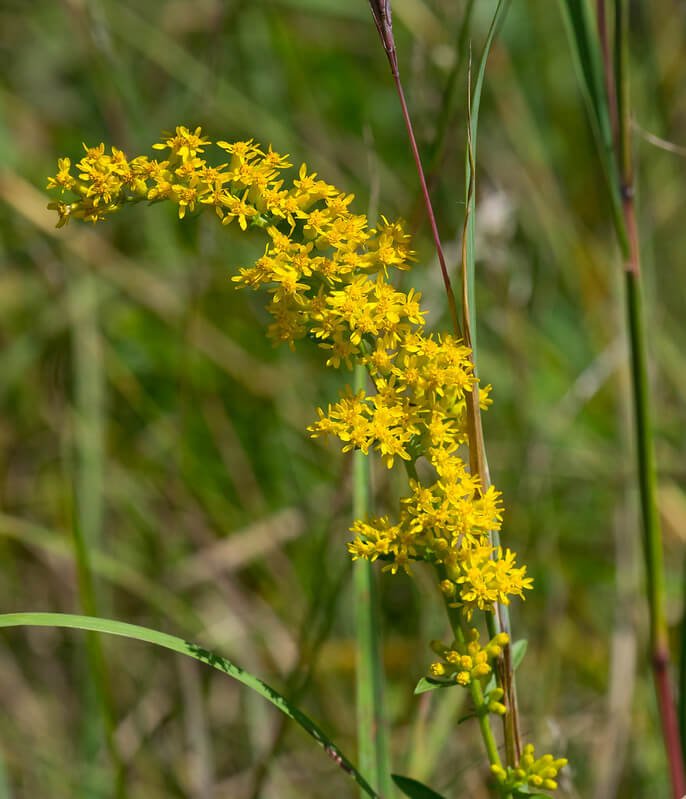Bradbury Monarda (Monarda bradburiana)
Bradbury’s Monarda, like most Monardas, attracts many different kinds of native bees, butterflies, skippers, hummingbird moths, and hummingbirds who visit the flowers for nectar (illinoiswildflower.info). It is a host plant to the specialist bee, Dufourea monardae, and also the host plant to 13 species of butterflies and moths in our area (nwf.org). Bee Balms are some of the best forage plants for bumble bees because their flowers open continuously throughout the day, providing an ongoing nectar source (Holm, 2017). Bradbury’s Monarda is native south of Michigan but I include it because it is shorter, more compact, and sticks around longer than some of our Michigan Monardas, making it an excellent choice for smaller gardens. The strong scent makes it unpalatable to most mammalian herbivores. In general, Monardas are such a joy to have in the garden, they bring so many hummingbirds into my yard every year.
Photo Credit: Peganum
Bradbury’s Monarda, like most Monardas, attracts many different kinds of native bees, butterflies, skippers, hummingbird moths, and hummingbirds who visit the flowers for nectar (illinoiswildflower.info). It is a host plant to the specialist bee, Dufourea monardae, and also the host plant to 13 species of butterflies and moths in our area (nwf.org). Bee Balms are some of the best forage plants for bumble bees because their flowers open continuously throughout the day, providing an ongoing nectar source (Holm, 2017). Bradbury’s Monarda is native south of Michigan but I include it because it is shorter, more compact, and sticks around longer than some of our Michigan Monardas, making it an excellent choice for smaller gardens. The strong scent makes it unpalatable to most mammalian herbivores. In general, Monardas are such a joy to have in the garden, they bring so many hummingbirds into my yard every year.
Photo Credit: Peganum
Bradbury’s Monarda, like most Monardas, attracts many different kinds of native bees, butterflies, skippers, hummingbird moths, and hummingbirds who visit the flowers for nectar (illinoiswildflower.info). It is a host plant to the specialist bee, Dufourea monardae, and also the host plant to 13 species of butterflies and moths in our area (nwf.org). Bee Balms are some of the best forage plants for bumble bees because their flowers open continuously throughout the day, providing an ongoing nectar source (Holm, 2017). Bradbury’s Monarda is native south of Michigan but I include it because it is shorter, more compact, and sticks around longer than some of our Michigan Monardas, making it an excellent choice for smaller gardens. The strong scent makes it unpalatable to most mammalian herbivores. In general, Monardas are such a joy to have in the garden, they bring so many hummingbirds into my yard every year.
Photo Credit: Peganum
Life Cycle: Perennial
Sun Exposure: Full, Partial
Soil Moisture: Medium, Medium-dry
Height: 1-2 feet
Plant Spacing: 1-1.5 feet
Bloom Time: June-July
Bloom Color: Pinkish Purple
Advantages: Bird Favorite, Pollinator Favorite, Deer Resistant, Great Landscaping Plant
Host: 13 species of butterflies and moths use this as a caterpillar host plant in our area (nwf.org)
Specialist Bee: Beebalm Shortface (Dufourea monardae) (illinoiswildflower.info)
Resource: Holm, Heather. Bees: An Identification and Native Plant Forage Guide. Pollination Press LLC, 2017







